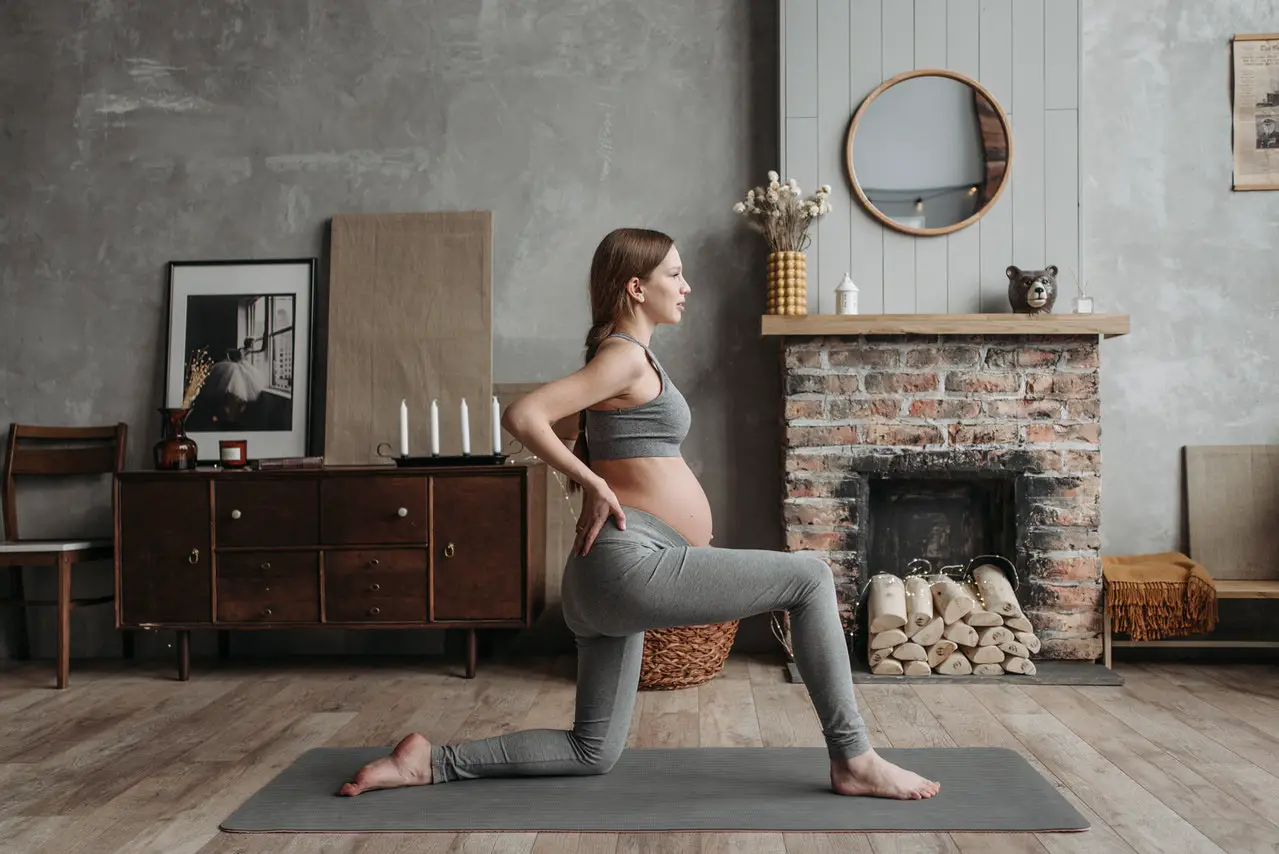
With the strange world we live in today, it can be a challenging and emotional period for pregnant women. Taking care of your emotional and physical health is critical, and for the most part, this should entail exercise.
Exercises you can do at home while pregnant include walking and jogging, and stationary cycling. You can also incorporate swimming, running, pelvic floor exercises, and squats into your workout routine. Leveraging these workouts helps you to have a healthy pregnancy in the long run.
When it comes to pregnancy workouts, there are a few activities that you should avoid doing as part of your routine. The majority of activities can be done at any time during each trimester.
As your body evolves, you can improve your strength, stability, and physical adaptability by modifying and scaling back the exercises when necessary.
This article will go over prenatal exercises for the first, second, and third trimesters at home.
Pregnancy Exercises First Trimester
Exercising during your first trimester has numerous health benefits. You’ll sleep better, lose weight before and after delivery, enhance your mood, reduce stress, and lower the risk of cesarean section or early birth.
Whether you have never exercised before pregnancy or are a top-tier athlete, you should consult a physician about developing a training plan that considers your health concerns. This is so you can figure out what kind of exercises you can undertake at home throughout your first trimester.
Here are some of the great exercises you can do in your first trimester in the comfort of your home:
- Walking and Jogging
Walking on an even surface is the most gentle, lowest-impact activity for pregnant women. A significant increase in heart rate can be achieved by swinging the arms in wide, rhythmic motions while walking.
Walking in a peaceful natural area might also help you feel better and relax. You can progressively increase your walking time to 30 minutes three to five times per week throughout the first trimester. Those who aren’t used to walking can start by going for a few 10-minute walks each week.
You can gradually progress from walking to jogging during the first trimester if you’re used to running, but you must do so on a plain, even surface.
- Dancing
You can dance as a pregnancy exercise during the first trimester. Feel free to keep your heart pumping to the beat of your favorite music as long as your dancing routine doesn’t include leaping, jumping, or whirling.
If you don’t enjoy dancing, consider enrolling in an exercise program. Some are even signed expressly for expectant mothers.
You can enjoy the company and friendship of other future mothers while knowing that every activity has been designed for safety in a prenatal exercise class. You can also sign up for the exercise class online and do it from the convenience of your own home.
Pregnancy Exercises Second Trimester
During the second trimester, you should pay attention to your body’s response to exercise and adjust your workouts accordingly. You should also stop doing activities that can cause you to lose your balance, such as gymnastics, skating, or hiking.
Swimming, running, or stationary cycling can be substituted for these activities that do not necessitate exceptional balance.
Here are some of the exercises you can do at home during your second trimester:
- Stationary Cycling
The best second-trimester pregnancy exercise at home is riding a stationary bike. During your second trimester, stationary cycling can help you build muscle strength and reduce your chance of falling.
Your belly begins to grow in the second trimester, which is when you should avoid putting too much stress on your abdomen. Sitting on an exercise bike and cycling is the ideal kind of exercise for you, as long as it doesn’t cause you any discomfort and there are no risks.
- Running
If you were a runner before becoming pregnant, or if you ran safely during your first trimester, you can keep running. You can stick to your old running regimen or try to run for 30 minutes three to five times per week.
Keep in mind that your body is changing, and your center of gravity is also shifting. This implies that you must exercise caution to avoid falling. Run on a treadmill with safety rails or level running tracks.
During your second trimester, avoid hiking trails and walking on cracked sidewalks. This is not the time to begin running if you have never done so before. Continue with your exercises. If you experience joint or back discomfort, you should stop running.
- Swimming
During your second trimester, swimming can help you relax your muscles and obtain all the alone time you need. Swimming activities that build core muscles while putting little strain on the abdomen are also options.
If nothing else, water exercise is beneficial during pregnancy because there is less risk of falling. The water is relaxing, the motion is low-impact, and you may strengthen your muscles while increasing your aerobic capacity. You can go for swimming activities three to five times a week for 30 minutes.
- Slow Jogging
Slow jogging is for jogging enthusiasts. It is only advised for pregnant women who are in good health. You can include slow jogging exercises in your second-trimester exercise routine if you have regular checkups and your doctor has permitted you.
However, there are some guidelines to follow to keep the activity safe for both you and your baby. You should only jog on level surfaces to keep a steady pace without feeling exhausted. If you get fatigued when jogging, stop and sit down for a while and relax.
Pregnancy Exercises at Home Third Trimester
Even in the third trimester, regular exercise is safe and can help alleviate some of the discomforts of pregnancy. However, if you have problems during pregnancy, you may need to avoid specific exercises.
You can ask your doctor for advice on which exercises are best for you to do at home. Here are some of the pregnancy exercises you can do at home when you’re in your third trimester:
- Pelvic Floor Exercises
The pelvic floor, which supports the internal organs, supports the uterus, which shelters a developing fetus in the third trimester. The pelvic muscles become overworked and weaker as a result of carrying that much weight. Pelvic floor exercises, often known as “Kegels,” are essential to maintain muscular tone.
Pelvic floor workouts can help prevent unpleasant leaks caused by stress urine leaking when you sneeze or laugh. This is a frequent condition in the third trimester that can last after the baby is born. As a result, you must continue to do pelvic floor exercises during your third trimester.
- Squats
When you’re in your third trimester and waiting for delivery, squatting is one of the best workouts you can do to stay in shape. Squats are also safe to do throughout pregnancy. You can squat to help the baby enter the lower pelvis and open up by utilizing gravity’s inherent force.
You can assist yourself with the squats by grabbing the back of the chair with both hands and using a floor mat for mild cushioning. Stand with your feet in line with your shoulders and your toes pointed out to the sides, not parallel.
You can do squats five to seven times per day. Squats help to strengthen the legs, abdominals, and lower back muscles. You should avoid squats if you have pain in your pubic region or groin.
Take Away
Physical activity is helpful to both the mother and the baby during pregnancy. Including some type of exercise in your weekly routine will help you maintain a strong core, a healthy cardiovascular system, and a fit body.
Exercises can also be beneficial to your mental health during pregnancy. When exercising, pay attention to your body and stop if you experience any pain or discomfort. For the duration of your pregnancy, find the perfect workout routine for you.





